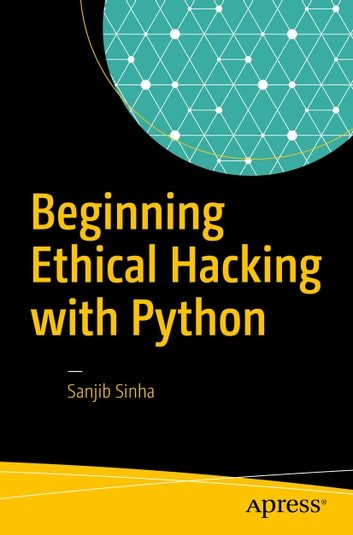Smart Phone Remote Controller ● Widespread Compatibility: Your smartphone can function effectively with the standard connector that is frequently used to replace iOS cellphones.● Plug and Play: Your smartphone may become an…
What you Need to Know about Ethical Hacking using Python

It is common practice amongst ethical hackers to write nifty scripts and automate any structured process, ranging from small network scans to wide area network packet sniffing. In recent years, Python has become the language of choice for such tasks, and there are good reasons for this. In this article on ethical hacking using Python, we will discuss the reasons that make these two such a brilliant couple
Below is the list of topics we shall be going over:
What is Ethical Hacking?
The term hacking goes a long way back. To be exact, it all started at the Railroad Club of MIT, where both the term ‘hacking’ and ‘hacker’ were first coined. It’s been almost 50 years now, and hacking has evolved into a discipline in the current day and age. With the increase in awareness regarding data protection and data privacy, hacking has been deemed as an illegal activity today. If caught, there’s a good chance that you will be prosecuted for quite some time depending on the degree of harm caused.
None the less, to protect themselves from hackers of all sorts, employment of Ethical Hackers has become a common practice amongst organizations. Ethical hackers are given the responsibility of finding and fixing security flaws for a certain organization before black hat hackers find them.
What is Python?
Python is a general-purpose scripting language that has gained immense popularity amongst professionals and beginners for its simplicity and powerful libraries. Python is insanely versatile and can be used for almost any kind of programming. From building small scale scripts that are meant to do banal tasks, to large scale system applications – Python can be used anywhere and everywhere. In fact, NASA actually uses Python for programming their equipment and space machinery.
Python can also be used to process text, display numbers or images, solve scientific equations, and save data. In short, Python is used behind the scenes to process a lot of elements you might need or encounter on your devices.
Why use Python for Ethical Hacking?
Python has gained its popularity mostly because of its super powerful yet easy to use libraries. Sure Python has awesome readability and it is really simple and all but nothing really beats the fact your job as a developer is made super simple with these libraries. These libraries find uses in all sorts of domains, for example, artificial intelligence has Pytorch and Tensorflow while Data Science has Pandas, Numpy, Matplotlib.
The Python language is used widely for general purposes, and it’s a high-level programming language. It is a very simple and powerful scripting language that is open source and object-oriented. Python has inbuilt libraries which can be used for various functions, and hacking is one of them. Python is very popular, and it has great demand in the market. Learning how to hack using Python will the great for an understanding language better.
Similarly, Python is brilliant for ethical hacking for the following reasons:
- Nifty python libraries like Pulsar, NAPALM, NetworkX etc make developing network tools a breeze
- Ethical hackers generally develop small scripts and python being a scripting language provides amazing performance for small programs
- Python has a huge community, hence any doubt related programming is quickly solved by the community
- Learning Python also opens up your doors to several other career opportunities

Demo: Dictionary Attack using Python
Let me give you guys a small demonstration as to how an ethical hacker may use Python in his day to day job. Suppose you were scanning for a 3-way handshake between an FTP server and a client and you were successful in doing so too. But as you guys might already know, passwords are never really stored in plain text. They are always hashed before being stored in a database and normally the hash itself is compared for verification purposes.
Let us create a small Python program that can be used to crack a password using the dictionary attack method.
import hashlib
flag = 0
pass_hash = input(“md5 hash: “)
wordlist = input(“File name: “)
try:
pass_file = open(wordlist,”r”)
except:
print(“No file found :(“)
quit()
for word in pass_file:
enc_wrd =word.encode(‘utf-8’)
digest =hashlib.md5(enc_wrd.strip()).hexdigest()
print(word)
print(digest)
print(pass_hash)
if digest.strip() == pass_hash.strip():
print(“password found”)
print(“Password is ” + word)
flag = 1
break
if flag == 0:
print(“password not in list”)
Okay, guys, this brings us to the end of this “Ethical Hacking Using Python” article. This is one of the blogs in a long list of ethical hacking blogs that I have published. For more information regarding cybersecurity, you could check out my other blogs.
If you wish to learn Cybersecurity and build a colorful career in cybersecurity, then check out our Cybersecurity Certification Training which comes with instructor-led live training and real-life project experience. This training will help you understand cybersecurity in depth and help you achieve mastery over the subject.
How Passwords are Hacked with python
As we know that the passwords of websites or files are not stored in the form of plain text in the database of websites. In this tutorial, we are going to hack the plain text, which is secured by a password. In the plain text, the passwords are stored in the hashed (md5) format.
So, the user has to take the input_hashed(which is the hashed password stored in the database), and then they have to try to compare it with the hashed(md5) of each plain text password which can be found in the password file.
When the match of the hashed password is found, the user can display the plain text password, which is stored in the file of passwords. But if the password is not found in the file of input passwords, then it will display that “Password is not found”, this happens only when the buffer overflow does occur.
These types of hacking attacks are considered “Dictionary Attacks”.
Example:
- import hashlib
- print(“# # # # # # Password Hacking # # # # # #”)
- # to check if the password is found or not in the text file.
- password_found = 0
- inputinput_hashed = input(” Please enter the hashed password: “)
- password_document = input(” \n Please enter the passwords file name including its path (root / home/): “)
- try:
- # here, we will try to open the passwords text file.
- password_file = open(password_document, ‘r’)
- except:
- print(“Error: “)
- print(password_document, “is not found.\n Please enter the path of file correctly.”)
- quit()
- # now, for comparing the input_hashed with the hashes of the words present in the password text file for finding the password.
- for word in password_file:
- # to encode the word into utf-8 format
- encoding_word = word.encode(‘utf-8’)
- # to Hash the word into md5 hash
- hashed_word = hashlib.md5(encoding_word.strip())
- # to digest that the hash into the hexadecimal value
- digesting = hashed_word.hexdigest()
- if digesting == input_hashed:
- # to compare the hashes
- print (“Password found.\n The required password is: “, word)
- password_found = 1
- break
- # if the password is not found in the text file.
- if not password_found:
- print(” The password is not found in the “, password_document, “file”)
- print(‘\n’)
- print(” # # # # # # Thank you # # # # # # “)
- # # # # # # Password Hacking # # # # # #
- Please enter the hashed password: 1f23a6ea2da3425697d6446cf3402124
- Please enter the passwords file name including its path (root / home/): passwords.txt
Output:
Password found. The required password is: heartbreaker07 # # # # # # Thank you # # # # # #
Beginning Ethical Hacking with Python
Learn the basics of ethical hacking and gain insights into the logic, algorithms, and syntax of Python. This book will set you up with a foundation that will help you understand the advanced concepts of hacking in the future. Learn Ethical Hacking with Python 3 touches the core issues of cyber security: in the modern world of interconnected computers and the Internet, security is increasingly becoming one of the most important features of programming.
Ethical hacking is closely related to Python. For this reason this book is organized in three parts. The first part deals with the basics of ethical hacking; the second part deals with Python 3; and the third part deals with more advanced features of ethical hacking.

What You Will Learn
- Discover the legal constraints of ethical hacking
- Work with virtual machines and virtualization
- Develop skills in Python 3.
- See the importance of networking in ethical hacking
- Gain knowledge of the dark web, hidden Wikipedia, proxy chains, virtual private networks, MAC addresses, and more
2767168 [ufwp id=” 2767168 “]








